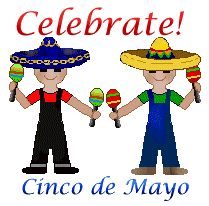
|
Some Common Myths Thought to be True - Myth 14
Myth 14: Cinco de Mayo is "Mexican Independence Day"
Literally "the Fifth of May," Cinco de Mayo is a Mexican Holiday celebrating
the Battle of Puebla, which took place on May 5, 1862. In 1861, France sent a
massive army to invade Mexico, as they wanted to collect on some war debts. The
French army was much larger, better trained and equipped than the Mexicans
struggling to defend the road to Mexico City. It rolled through Mexico until it
reached Puebla, where the Mexicans made a valiant stand, and, against all
logic, won a huge victory.
|
| Cinco de Mayo | |
|
Isn't it Mexico's Independence Day?:
That's a common misconception. Mexico celebrates its independence on September
16, because it was on that day in 1810 that Father Miguel Hidalgo took to his
pulpit in the village church of the town of Dolores and invited his flock to
take up arms and join him in overthrowing Spanish tyranny. Independence Day is
a very important holiday in Mexico and not to be confused with Cinco de Mayo.
|
|
| ⇦ Back to Myth 13 Return to Myth Choices Page 1 On to Myth 15 ⇨ | |